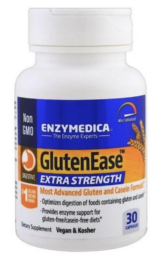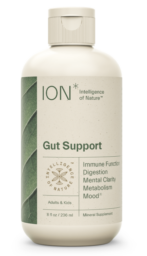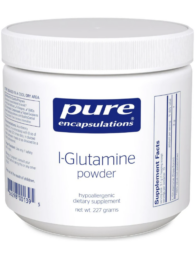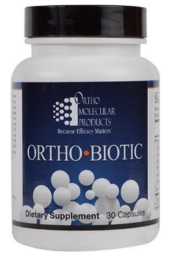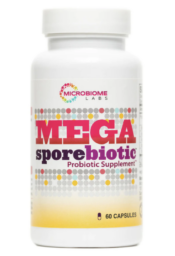What Is Leaky Gut Syndrome?
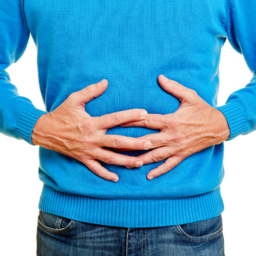
Leaky gut syndrome, a chronic state of increased intestinal permeability, is a term used in functional and naturopathic medicine to help explain low-grade inflammation within the digestive tract. From lack of adequate nutrition absorption, to chronic inflammation in all-organ systems, to intestinal flora (normal bacteria) disruptions, leaky gut syndrome is the central puzzle piece.
The lining of your digestive tract is made up of epithelial tissue: cells linking together with tight junctions that allow nutrients in but keep toxins, bacteria, and partially digested foods out of the bloodstream. The surface of this tissue is also a home to the friendly bacteria (probiotics) that help you digest food, activate and even make certain vitamins, reduce gut inflammation, and regulate your immune and nervous systems. In addition to the tissue, your gut has a vast lymphatic system (the highway for the immune system). In fact, the gut’s intestinal region is where you find the highest concentration of lymph nodes.1
The SAD diet (Standard American Diet) is notorious for creating inflammation along the digestive tract. Much like if you have a swollen cut on your knuckle that is red, puffy, and painful, these tight junctions can become inflamed in the same way–swollen, red and puffy–making them no longer tight, but leaky. This means bad things get in, nutrition is poorly broken down and poorly absorbed, and that home to the probiotics is no longer hospitable.
Do you have symptoms with Leaky Gut? Maybe. You could feel low-grade nausea, indigestion, bloated, gassy, have loose stool or hard, less frequent bowel movements. Your symptoms may be subtle or you may not have any at all. Leaky gut, much like silent reflux, can be just that – silent.
Why is the SAD diet so bad? The SAD diet is high in sugar and calories and low in nutrition, key vitamins and minerals.2 It often has many preservatives, carbohydrates, hydrogenated oils, artificial sweeteners, dyes, and flavor enhancers, all of which contribute to the low-grade gut inflammation in leaky gut.
From my 15+ years assessing food sensitivities and allergies, I can tell you from my own experience that gluten and gliadin (the proteins found in wheat, barley, durum, kamut, rye, and spelt) and casein and whey (proteins found in bovine dairy) are the biggest culprits responsible for creating gut inflammation. I have assessed thousands of immunoglobulin studies for IgG, IgE, IgA and to a lesser extent IgM. High levels of immunoglobulin titers indicate inflammation in the tissue and thus to these foods. It is clear to me that when it comes to consuming dairy and gluten, the inflammation created often outweighs the nutrition provided.
Why Don’t I Have Symptoms?
This question has plagued me for a long time. Is it that some of us are just more sensitive than others? Maybe the gut flora in some have adapted better than in others. Is it genetics – the old “George Burns” theory?
Yes, but also, the surface area of the small intestine is roughly 32 square meters and the colon is 2 square meters. This total area is roughly the size of a badminton or pickleball court.3 This means a lot of it can be inflamed long before you get a physical message from the intestines.
The inflammation does not occur everywhere all at once on the tract. Good ole aging and the amount of time you have been inflamed just catches up with you and eventually some straw breaks the camel’s back. Compare this idea to smoking. Smokers don’t get cancer a week, month, or even year after they start smoking. It takes a smoker an average of 18 years to develop cancer.4 The exception, for some reason, is George Burns, who attributed his long life to smoking cigars and drinking hard alcohol. But, I must emphasize, he was a rare case. Assume you are not George Burns.
Is My Flora Working For or Against Me?
Remember, the tissue of the bowel is home to friendly bacteria called probiotics. Healthy probiotics cannot grow well on inflamed tissue. When healthy gut mucosa depletes, so does the diversity of your gut flora. When inflammation hits, yeast and bacterial overgrowths become pervasive throughout the tissue. This imbalance is called dysbiosis. Diversity and balance of flora is the key. We need small, balanced diverse colonies in the gut. Not one big mass of yeast like candida or bacteria like E. coli, enterococcus, klebsiella and proteus. These bacteria bind together, throw a biofilm around themselves, and in that way, they can exist on your inflamed tissue. But, in this format, they are not helping you. You may start fermenting food rather than digesting it, leading to more gas, bloating, and a very irritable bowel.
What Can I Do About This?
A nutrition change for starters. Eat healthy 85-95% of the time. If those ratios are swapped, you cannot expect to have good health results. I am not suggesting you obsess over your food or feel shame if you eat a cookie, but rather that you make a conscious effort to develop healthy eating habits. Again, you can’t count on being a George Burns kind of exception to the rule when making diet and lifestyle choices. By the way, nicotine can contribute to leaky gut syndrome by compromising the gut barrier and increasing inflammation.5
Ok, so you are eating cleaner, now what? Take enzymes that help reduce bowel inflammation and support nutrition absorption. My favorites are Intolerance Complex and GlutenEase, both by Enzymetica. Next, help heal the gut tissue with formulas like ION Gut Health, GI Revive by Designs for Health and just plain L-Glutamine Powder. All of these have been shown to reduce inflammation in the bowel and restore tight junctions.
Lastly, increase the diversity of the flora of the digestive tract by taking probiotics. Rotate your probiotic routine regularly. When you finish off one bottle, switch to a different one. Staying on the same probiotic all the time reduces the diversity of the gut flora. I like rotating between Ortho Biotic 100, Ortho Biotic, MegaSpore, Prescript Assist, Saccharomyces boulardii.
Don’t assume you don’t have a leaky gut just because you don’t feel tummy troubles. Know that if you have been eating a SAD diet, you probably do have a leaky gut. Healing this can be done, but it centers around practicing great nutritional habits and maintaining a diverse flora. While George Burns famously teased about his unhealthy habits, it’s unlikely you’ll have a similar outcome.
Now, we don’t know George’s full health history. And, we all seem to know at least one person who can eat anything and still seems healthy. Why did George Burns luck out with such amazing longevity? No one really has a clue. But you know what? He was a comedian. I didn’t know him personally, but I wonder if his way of dealing with life’s stressors and turning them into laughter had something to do with it. Maybe laughter really is the best medicine. Laughter, and vegetables.
If you have comments and/or questions about this blog, email us at blog@peoplesrx.com.
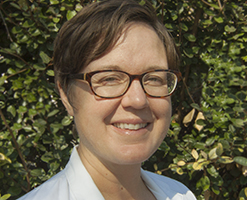
Amy Nelson, ND* received her Naturopathic Doctorate from the National College of Natural Medicine in Portland, OR where she studied nutrition, homeopathy, herbal and functional medicine. In addition, Dr. Nelson was the Associate at The IBS Treatment Center in Santa Monica where she treated irritable bowel syndrome and complex food allergies. Dr. Nelson utilizes her experience in natural medicine to address female and male hormonal imbalances, mental health, and digestive disorders. Amy is available for consultation at Peoples Lakeline.
*Although licensed in other states, Naturopathic Doctors are not currently licensed in Texas. To support licensure efforts, please visit www.txand.org.
References:
- https://www.sciencedirect.com/topics/medicine-and-dentistry/gastrointestinal-epithelium
- Grotto D, Zied E. The Standard American Diet and its relationship to the health status of Americans. Nutr Clin Pract. 2010 Dec;25(6):603-12. doi: 10.1177/0884533610386234. PMID: 21139124.
- Helander HF, Fändriks L. Surface area of the digestive tract – revisited. Scand J Gastroenterol. 2014 Jun;49(6):681-9. doi: 10.3109/00365521.2014.898326. Epub 2014 Apr 2. PMID: 24694282.
- Peretti-Watel P, Constance J, Guilbert P, Gautier A, Beck F, Moatti JP. Smoking too few cigarettes to be at risk? Smokers’ perceptions of risk and risk denial, a French survey. Tob Control. 2007 Oct;16(5):351-6. doi: 10.1136/tc.2007.020362. PMID: 17897995; PMCID: PMC2598568.
- https://www.ncbi.nlm.nih.gov/pmc/articles/PMC7841355/


